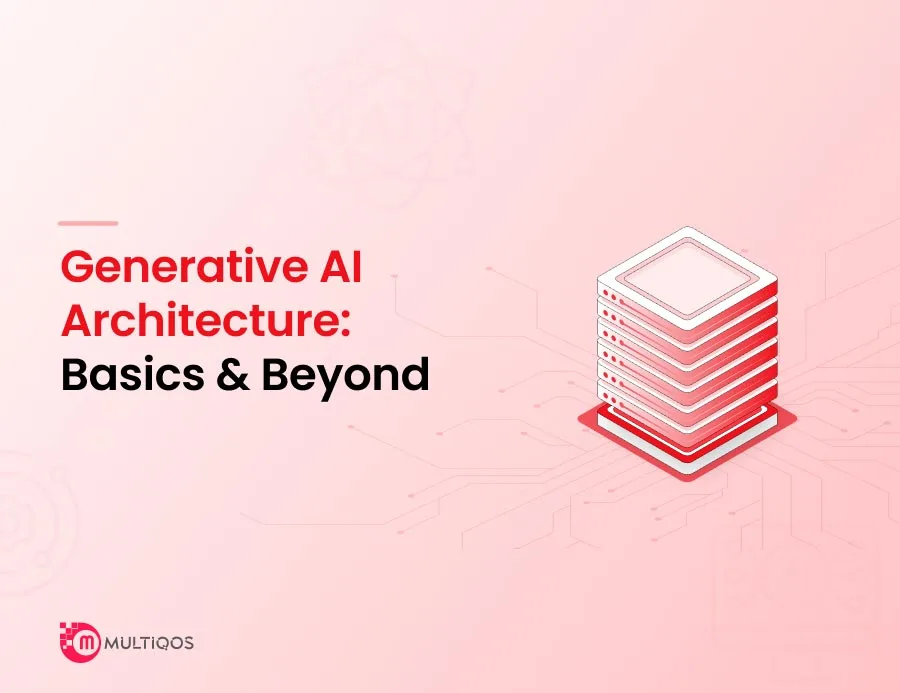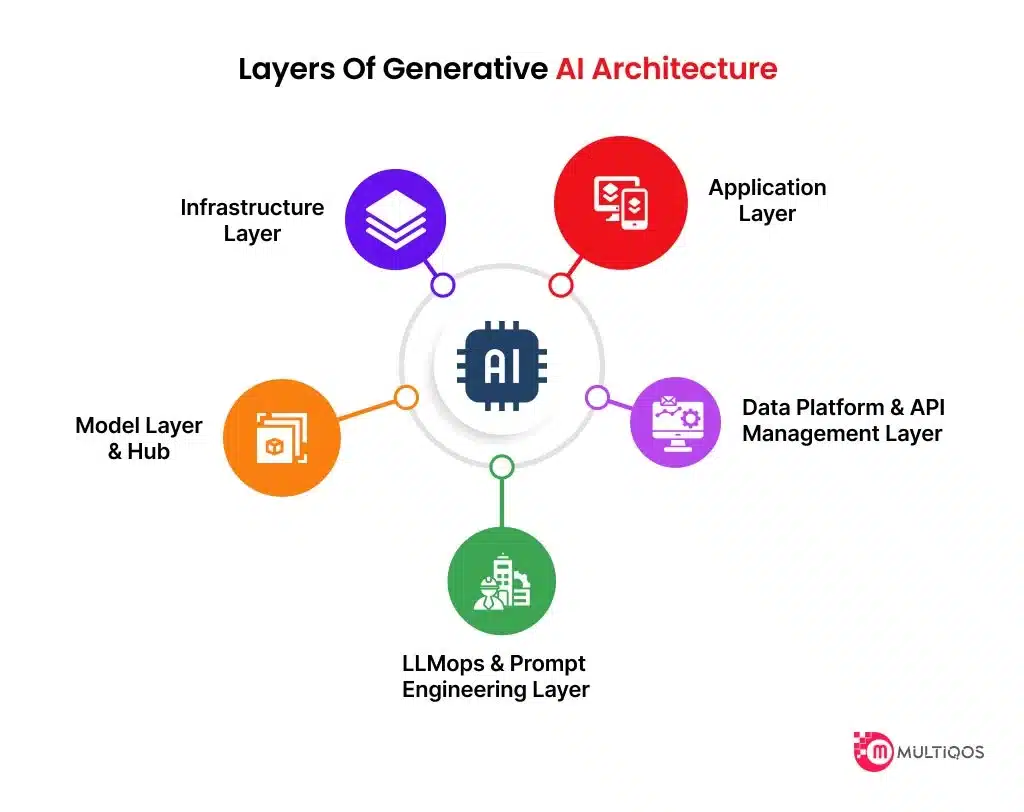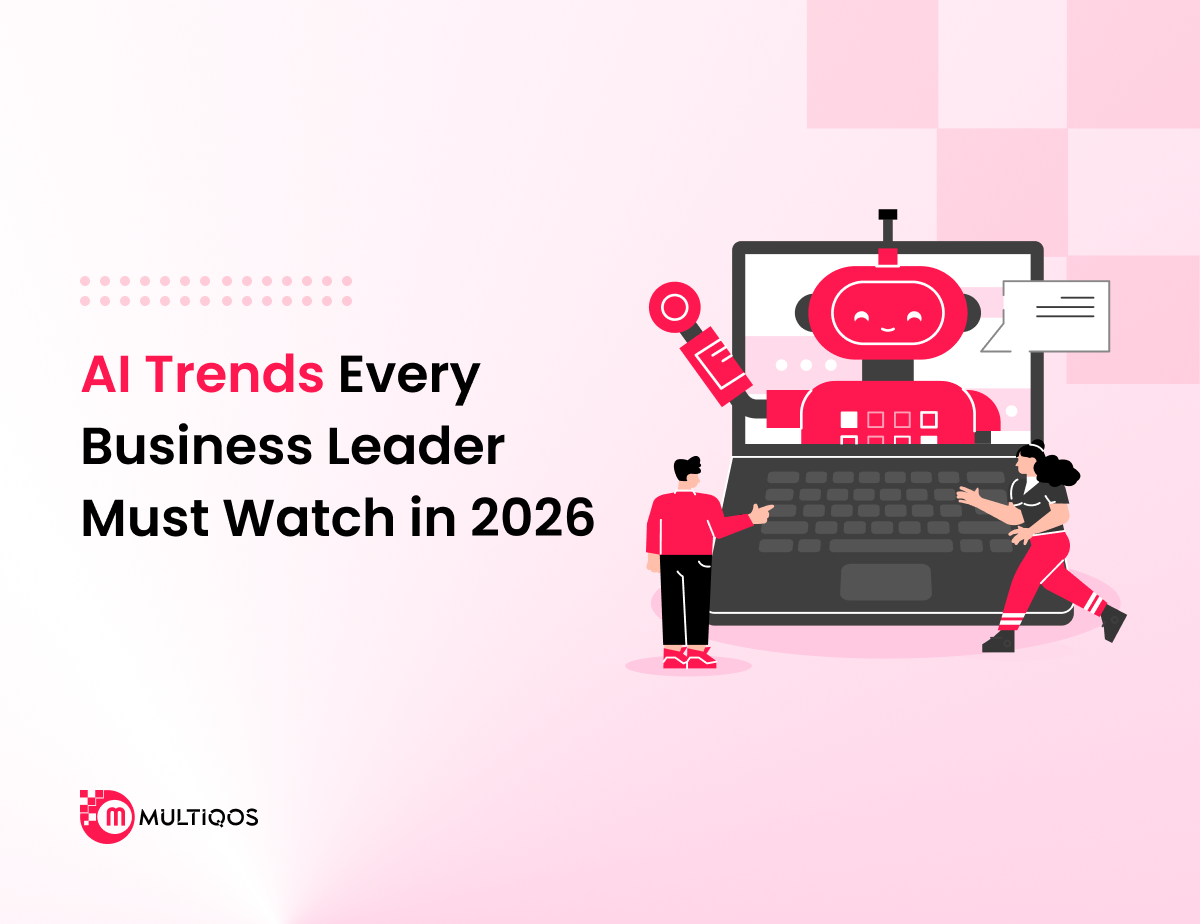
Introduction
The time is here where all types of businesses have started using generative AI architecture to bring potential change. Discussing generative AI, it uses machine learning to create new content, including different kinds of text, images, functionalities, and other data types. When we talk about traditional models, they focus on specific tasks, whereas generative AI can utilize data in new innovations and provide excellent outcomes.
Proving this, there was a study by gartner that shows 30% of manufacturers have started using generative AI, which will effectively enhance its development by 2027. This shows how powerful AI development can be in the future and how it can help your industry enhance significantly. Let’s understand in depth the architecture of generative AI in this blog post.
What is Generative AI Architecture?
Generative AI is a subset of artificial intelligence that leverages advanced machine learning techniques that particularly comes with deep learning, and enables models to produce original content. Generative AI comes with autonomous content creation, learning and mimicking patterns, and unleashing versatility.
For instance, GAN (Generative Adversarial Network) is a generative AI architecture that comes with two neural networks called the generator and the discriminator, which are trained through a competitive process. This network produces synthetic data samples that work similarly to training data, while the discriminator is a network that helps to distinguish between real and synthetic data. Later these two networks produce realistic samples and offer convincing outputs.
Few of the other examples include VAEs, transformers, and other autoregressive models that use generative data. Make AI companion chatbot app like Replika to interact with users on your behalf by employing AI technology.
Main Components of Generative AI Architecture
Let’s learn more about the main components and behind the scenes of generative AI architecture.
-
Data processing layer
It’s the initial layer for any enterprise that uses generative AI as it comes with collecting, preparing, and data processing. Inside data processing, the collection layer involves data gathering from different sources such as APIs, websites, social platforms, etc. Later this data collection uses tools and framework to provide structured and unstructured data.
The next step is to prepare the phase for cleaning and normalizing the data along with removing errors and inconsistencies. Later this clean data is transferred to the format based on the AI model to analyze. For example, the healthcare industry has started using AI-powered models to store their vast amount of data and discover more healthcare benefits.
-
Generative layer
It’s one of the essential components of generative AI architecture for enterprises that is responsible for creating new data content using machine learning models. In this model, it uses varieties of techniques including genetic algorithms, deep learning and more depending on the use cases. Along with this, it includes deep learning models that help to effectively generate high quality content including audio, text, and images.
Additionally, reinforcement learning models are used to generate data in response to specific scenarios. This model includes selection, deep learning, generic algorithms, and other techniques useful for capturing high-dimensional and relevant features. Learn how AI tools reshape the future in 2024 and make your life easier.
-
Improvement and feedback layer
This component offers enterprises continuous improvement along with generic model accuracy and efficiency. Moreover, the success of this application depends on the quality of the feedback and the analysis done using the optimization techniques. In this layer, the model collects user feedback along with generating data, identifying patterns, and other anomalies which can only be achieved using various tools and technologies. In this layer, data analysis is done to identify areas that require improvement.
Additionally, the model optimization techniques use hyperparameter approaches such as learning rate, optimizer, batch rate to help in achieving better performance. Moreover, it uses regularization techniques like L1, L2 which can be used to prevent overfitting and improvement in model generalization.
-
Integration and deployment layer
This is a very critical stage of generative AI architecture that helps in careful planning, optimization, and testing. In this layer, it needs several key steps that include setting up production infrastructure, integrating the models using front-end and back-end of the application along with monitoring the model performance. Another aspect of this component is that this layer ensures that the model is optimized for scalability and performance. Lately, it comes with cloud-based services and technologies to handle large volumes of data with ease.
-
Maintenance layer
This layer comes with monitoring and maintenance which ensures that the system uses appropriate tools and framework which helps to streamline the process. Later the component ensures that the system maintains better performance and reliability. Furthermore, adding generative AI in the system offers continuous monitoring of system behavior and making adjustments to maintain effectiveness and accuracy. Here the main task of this layer includes monitoring system performance, diagnosing and resolving issues, updating system, and scaling the system.
Layers of Generative AI Architecture
-
Application layer
In this layer, the generative AI tech stack enables machines and humans to collaborate with each other seamlessly by making AI models more accessible and easy to use. This can be classified into end-to-end applications using various models. Later, this end-to-end application uses generative AI models developed by companies based on domain expertise. While apps without proprietary models use open-source AI framework to build custom models using specific use cases.
-
Data platform and API management layer
To achieve better outcomes high-quality data is crucial in generative AI. While getting a proper state requires 80% of the development time which include data ingestion, quality check, cleaning, storage, and vectorization. Additionally, organizations follow strategies for both structured and unstructured data which is necessary to align with Gen AI strategy.
-
LLMops and Prompt engineering layer
LLMops comes with technologies, tooling, and practices to adapt and deploy models with end-user applications. It comes with activities like choosing a functional model, adapting this model for specific use cases, elevating the model, deploying it, and monitoring its performance accordingly. Moreover, one can adapt to fine-tuning prompt engineering which requires data labeling, model training, and deployment to production.
-
Model layer and hub
In this layer the model includes machine learning foundation models, LLM foundation models, a model hub, and fine-tuned models. This model serves as a foundation model of generative AI which works as a backbone. Along with this, it comes with deep-learning models to create specific content types which can be adapted for carrying out various tasks. Later the foundation layer is used to train models for both public and private datasets.
-
Infrastructure layer
This is the model that includes cloud platforms and hardware which is responsible for training workloads. While the traditional computer hardware cannot handle the massive amount of data, generative AI comes in to handle large datasets and clusters of GPUs or TPUs using specialized accelerator chips. With this, most businesses prefer to build and run large AI models in the cloud which can easily access computational power along with managing the spending when required.
Models of Generative AI Architecture
-
Large language models
LLM works as mathematical models which represent patterns found in natural language use. It can generate text, answer questions, and hold conversation within a sentence. Essentially, this can build sentences which sound human. These large language models have a wide range of multidimensional word representation of how words can be used in context along with providing examples. Let’s say, GPT-3 does not work well with humans- like conversations while GPT-4 runs using the customized version as it has its own LLM model.
-
Text-to-image models
DALL-E 2 or Mid journey is a text-based model that creates images using a simple effective technique. This model is well-trained to generate labeled images, represented numerically projected into a latent space. It is a model that adds noise into the images by using the technique known as text prompting. This process is totally mesmerizing as it refine content and image based on the requirements. Additionally, the model upscale image generated using the better quality outputs.
-
Fine-tuning LLMs and Text-to-image models
LLM helps to generate human-like text across various tasks and topics to meet the specific requirements of any particular industry. Fine-tuning helps to adapt an on-the-job training along with understanding the complexities of their role using the specific company need. And without fine-tuning LLM might lack the accuracy and do not provide proper outcome. Therefore, it’s recommended to add fine-tuning LLM models in text-to-image based models.
-
VAE
Variational Autoencoders is a generative model that works on the principles of probabilistic modeling. The main aim of the model is to learn probabilistic data distribution. Where VAEs can be used to generate images, compress data, and reconstruct images. One can get more ideas as to how AI transforms software development companies to improve their ROIs.
-
GAN
Generative Adversarial Networks offers two neural networks including generator and a discriminator which are in a competitive relationship. Here the generator creates data, while the discriminator helps to evaluate the authenticity of that data. This process helps to improve the ability to create realistic data.
-
Autoregressive
It is a statistical model that is used to predict the value of the future based on past values. This model is also used with generative AI to generate new data points. It assists businesses in assuming the variable’s value at a given time. Whereas auto-regressive models are popular among various applications including natural language processing, time series forecasting, and image synthesis.
-
Stable diffusion
It is one type of AI model that helps to create AI images using the forward diffusion and reverse diffusion processes. Here, the forward process adds noise to the image while reverse removes the noise. This is the approach used in deep learning models to generate high-quality images. The model has knowledge to remove noise effectively as it understands the data distribution process, structure, and allows users to generate high-quality images with ease.
-
Transformers
It is a neural network that mainly uses encoder-decoder to generate excellent outcomes. It does not rely on convolution or recurrence. Instead, it employs modules that stack on top with each other to process the data input efficiently.
-
Chatbot
Chatbots come in two different types, retrieval and generative based. This chatbot offers simple and direct response based on user prompt, while in generative chatbots, it constructs unique and contextual responses. It tracks the ongoing conversation by utilizing the history of user exchange along with matching the appropriate response based on its semantic algorithm understanding.
-
Multimodels
This is a model that processes multi-data types along with creating advanced input and integrated data. Let’s say, you want to generate an image based on the text you describe. This model uses DALL-E 2 and open AI generative models to generate text, audio, video, and more along with taking care of multimodal interactions.
Conclusion
In summary, the future of generative AI architecture is amazing, as it uses adaptive and interactive ways, offers domain specific applications, and hybrid models. If you’re looking to transform the industries using AI architecture, add generative AI approaches based on your unique requirements. Connect to one of the best software development company and partner with them to understand your unique challenges and craft bespoke architecture along with unleashing the power of generative AI for your enterprise.
FAQ on Generative AI Architecture
Use generative AI to create new content such as images or text, which can mimic human creativity. Whereas traditional AI operates within predefined rules and datasets that helps in performing specific tasks.
GPT-3 offers a cutting-edge model in generative AI architecture which is renowned for its ability to generate human-like text based on user’s prompts as they are trained to work with vast amounts of data.
Generative AI empowers businesses to foster creativity, automate tasks, and personalize customer experiences, which leads to a competitive edge and improved efficiency.
Security measures for generative AI platforms include data privacy, robustness against attacks, bias mitigation, authentication, secure development, monitoring, updates, and incident response. These ensure safe and responsible usage of generative AI technology.
Using enterprise generative AI poses risks which include reputational damage, legal and IP challenges, along with ethical concerns that surround privacy and fairness.
Generative AI can be integrated with enterprise applications for code generation, content management, marketing, and product design. Later, this integration enhances efficiency, personalization, and innovation across various business functions.
Get In Touch







